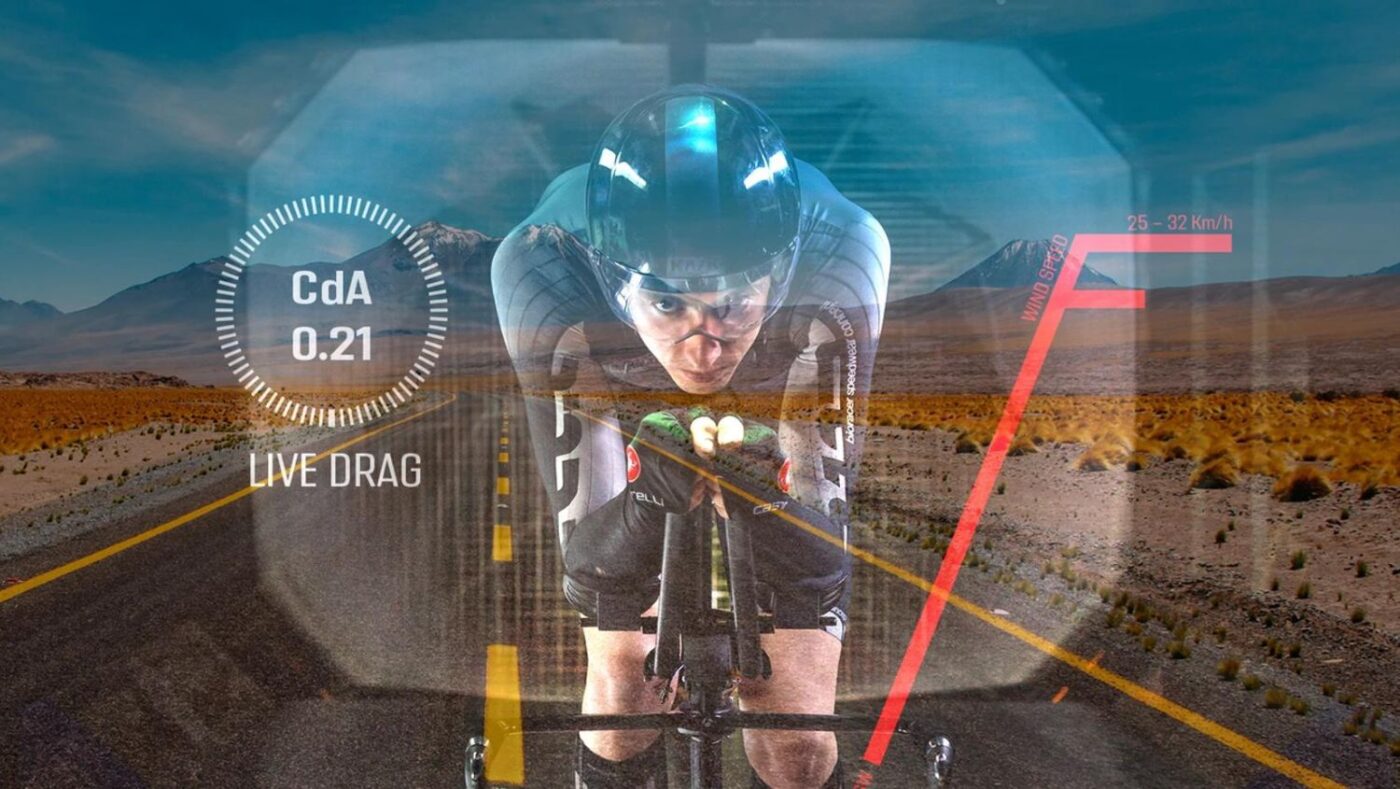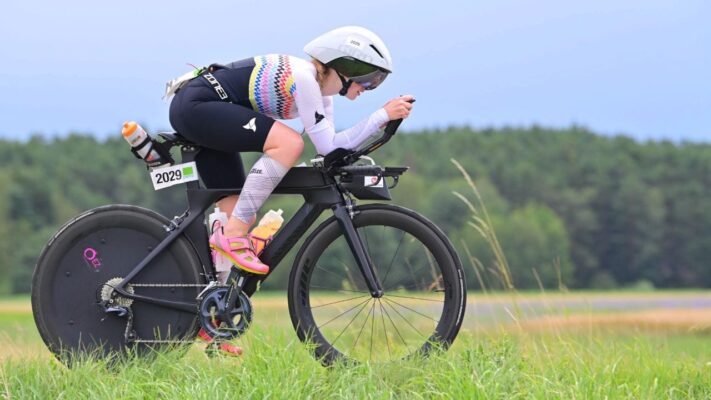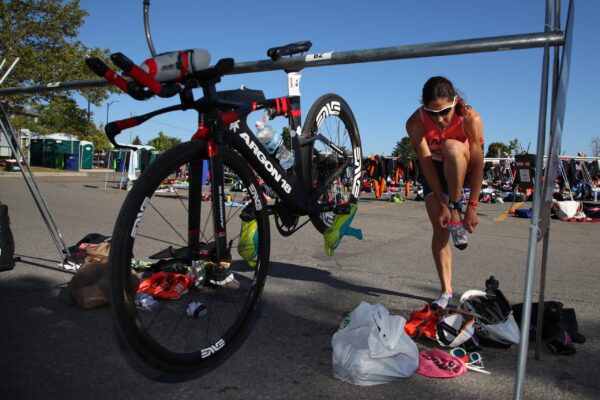posts
Tech Inventions Changing Triathlon In 2025
Introduction
The world of triathlon racing is evolving at an astonishing pace, and 2025 is the year where technology is no longer just an accessory — it’s becoming a core part of an athlete’s kit, training, and race experience. Whether you’re gearing up for your first event or aiming for a personal best, the innovations hitting the market now will change how you prepare, compete, and recover.
At Tri-n-Win, we believe understanding these tech advancements isn’t just for elite athletes — beginners stand to gain just as much. In this article, we’ll examine key technological inventions impacting triathlon racing in 2025, highlight how they integrate with equipment like your triathlon racing bike, triathlon racing shoes, and even a triathlon racing belt, and show you how to make them work for your journey.
1. AI-Driven Training Platforms & Biometrics
One of the most significant changes in 2025 is the rise of AI-powered training systems. These platforms ingest your biometric data, environmental factors (temperature, humidity), equipment metrics, and training history to craft highly personalised plans
For example, instead of generic swim-bike-run schedules, you now get sessions auto-adjusted in real time: if your heart rate is elevated or recovery is incomplete, the system may reduce load or alter workout type. This means fewer wasted sessions, less guesswork, and smarter progression — especially useful for beginners who want to maximise training efficiency.
Incorporating this tech means your triathlon racing bike data (power, cadence), running metrics from your triathlon racing shoes (stride length, ground contact time), and even transition speeds (via your triathlon racing belt or smart tag) can feed into one unified system. This integration gives you a clearer picture of strengths, weaknesses, and race readiness.
2. Smart Equipment: Bike, Shoes & Belts Get Smarter
The gear you use is also getting a tech leap. For your triathlon racing bike, new models launched in 2025 feature built-in sensors measuring vibration, aerodynamics, real-time power, and even fatigue index.
Likewise, your triathlon racing shoes may come with embedded sensors that track foot-strike symmetry, pronation, cadence, and fatigue accumulation. These metrics let you adjust technique and avoid injury before it happens.
Even accessories like a triathlon racing belt are evolving: imagine race belts with integrated RFID or BLE tags that measure transitions, time between legs, and sync seamlessly with event timing systems — providing data on your T1 and T2 performance automatically. This data helps you sharpen one of the most overlooked parts of triathlon racing.
3. Augmented Reality (AR), Virtual Reality (VR) & Race Simulation
Training is no longer confined to a pool, a road, or a treadmill. AR and VR technologies are now fully available for triathlon training in 2025. According to recent trend reports, they’re being used not only for simulation but for immersive race-specific practice.
Imagine putting on a VR headset and cycling your exact race course — hearing ambient noise, seeing elevation changes, practising corners, descents, and transitions. Or simulating a mass swim start with virtual waves and obstacles. This means you can familiarise yourself with race logistics, visualise performance, and reduce race-day nerves.
For beginners, this is a huge benefit: you gain confidence, muscle memory, and mental calm without travelling to every race venue. Integrating these sessions with your equipment — for example, using the triathlon racing bike attached to a smart trainer inside the VR environment — creates a powerful, holistic practice.
4. Enhanced Recovery Tech & Wearables
While training and gear get more advanced, recovery tech is also stepping into the spotlight. Wearables now monitor sleep quality, muscle oxygenation, HRV (heart rate variability), and even tissue recovery markers. By giving you actionable insights — “your leg recovery is only 65%,” or “you’re carrying more fatigue than expected” — you can adjust training load proactively.
Applications for your day-to-day include pairing this data with your triathlon racing shoes or triathlon racing bike sessions: if your legs show poor recovery after a bike ride, you may switch the next session to swim or mobility work instead of hard intervals. Smart recovery means you train more consistently and avoid injuries.
5. Sustainability & Eco-Tech in Triathlon Racing
Technology in 2025 is not only about performance — it’s about sustainability. Triathlon events and gear manufacturers are embracing eco-friendly innovations: from recyclable materials in bikes and shoes to low-emission manufacturing and race venue partnerships focused on carbon reduction.
As an athlete, your gear choices matter. Choosing a sustainably manufactured triathlon racing bike or eco-certified race belt may have a small performance cost, but the long-term benefit for the planet and the sport is significant. Events now increasingly include digital race packs instead of printed materials, and some even offer hydrating stations with biodegradable packaging.
6. Smart Transition Tech — From T1 to Finish
A frequently overlooked area in triathlon racing is the transition segments. In 2025, technology is addressing this too. Smart mats, RFID-enabled shoes and belts, and advanced timing systems now give detailed breakdowns of the time you spend switching disciplines.
For example, if your triathlon racing belt has a built-in tag, you might receive a post-race report showing you lost 45 seconds in T1 compared to the median of your category. This allows you to train specifically on that segment — improving your overall race time significantly without necessarily training harder.
Final Thoughts
The landscape of triathlon racing in 2025 is being reshaped by technology. From advanced gear like triathlon racing shoes, triathlon racing bike systems, and intelligent belts, to training platforms, AR/VR simulations, and recovery wearables — the advantages are tangible and accessible.
For beginners, this means you can train smarter, race with confidence, and enjoy the journey without feeling left behind. But technology alone won’t carry you to the finish line — you still need consistency, good technique, and a willingness to learn. At Tri-n-Win, we encourage you to adopt tech that complements your training, not replaces it. Choose reliability over hype, practicality over novelty, and always prioritise comfort, fit, and relevance to your unique triathlon journey.
Whether you’re entering your first sprint or aiming for a longer distance, the right tech and mindset will position you for success. Embrace the innovations but stay grounded in preparation — that’s where true improvement happens.







